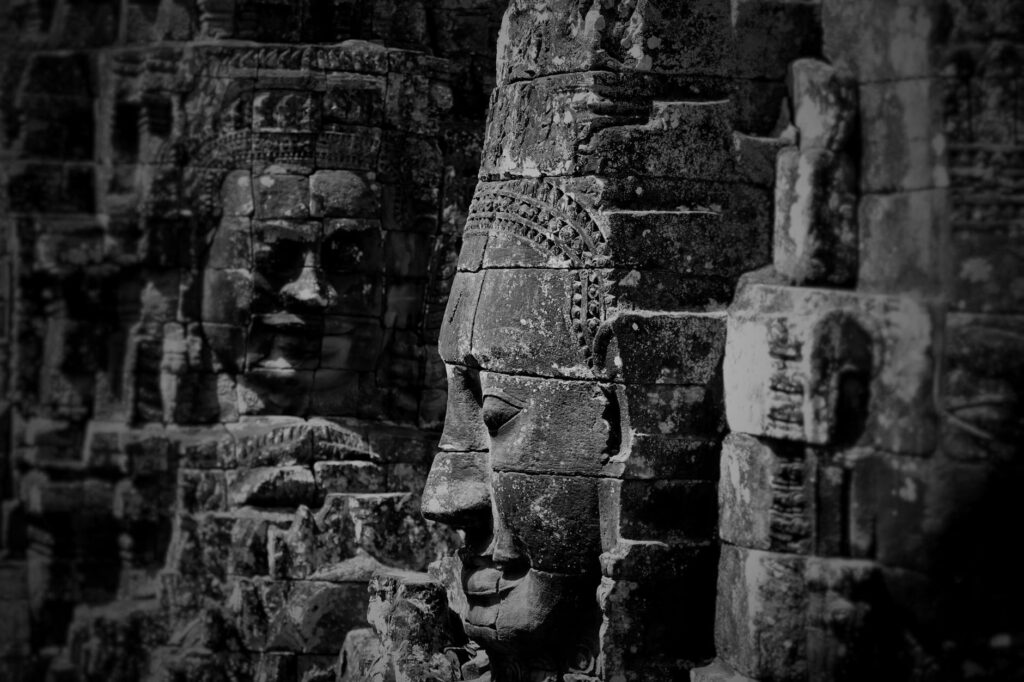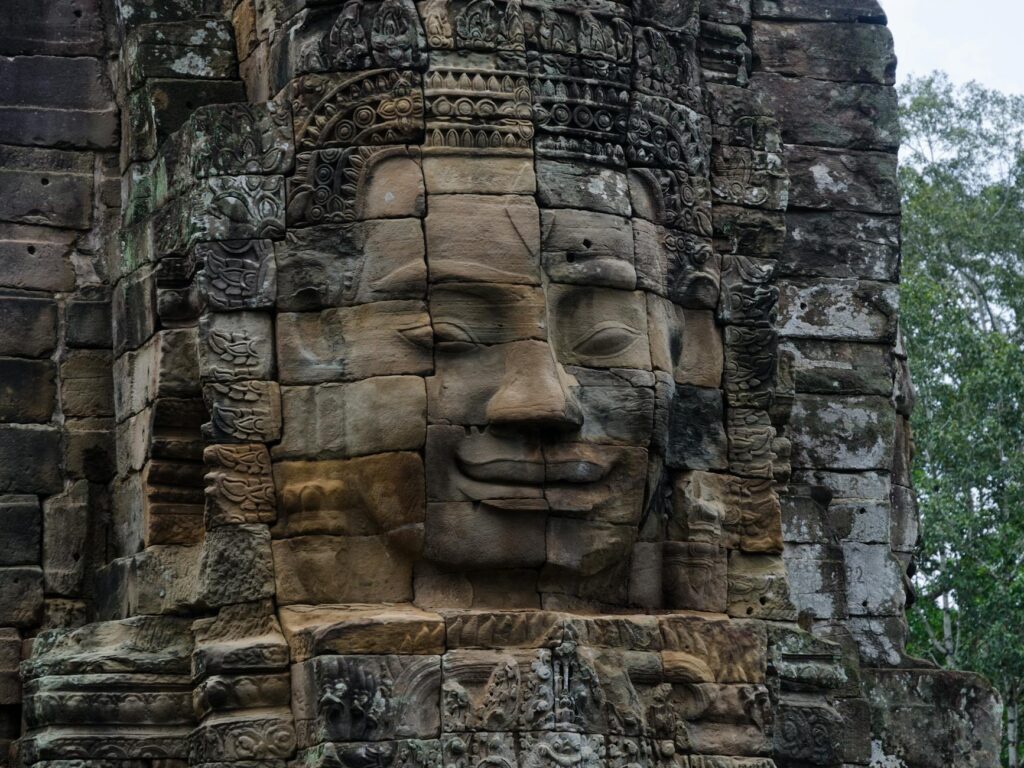The Bayon Temple, nestled within the walls of Angkor Thom, is a breathtaking masterpiece of Khmer architecture and a testament to the power and artistry of the Angkorian era. Its enigmatic smiling faces, carved into the stone towers, have captivated visitors for centuries, leaving them pondering the mysteries behind this iconic site. Let’s delve deeper into the wonders of this incredible temple.
The Enigmatic Faces of Bayon
The most striking feature of Bayon is undoubtedly its countless bas-reliefs depicting serene, smiling faces. These faces, typically appearing in groups of four on each tower, are believed to represent Avalokiteshvara, the Bodhisattva of Compassion, although their exact meaning remains a topic of debate among scholars.  The expression on their faces is both serene and enigmatic, conveying a sense of peace and wisdom that has drawn visitors from around the world. Learn more about the symbolism of the faces here.
The expression on their faces is both serene and enigmatic, conveying a sense of peace and wisdom that has drawn visitors from around the world. Learn more about the symbolism of the faces here.
The Architectural Marvel of Bayon
Beyond the faces, Bayon’s architectural complexity is equally awe-inspiring. The temple’s multiple levels, intricate corridors, and towering structures showcase a high level of engineering skill for its time. The central sanctuary is particularly impressive, with its intricate carvings and towering presence.  Exploring the temple reveals a labyrinthine network of passages and chambers, each with its own unique story to tell. Discover more about Angkorian architecture.
Exploring the temple reveals a labyrinthine network of passages and chambers, each with its own unique story to tell. Discover more about Angkorian architecture.
The Historical Significance of Bayon
Bayon was constructed during the reign of King Jayavarman VII in the late 12th and early 13th centuries. It served not only as a state temple but also as a representation of his reign and his commitment to Mahayana Buddhism. The temple’s bas-reliefs depict various scenes from his life, religious narratives, and daily life in the Angkorian kingdom. Read more about King Jayavarman VII. The carvings provide valuable insights into the social, religious, and political aspects of Angkorian society. [IMAGE_3_HERE]
Exploring the Inner Galleries
The inner galleries of Bayon are a treasure trove of intricate carvings. These bas-reliefs depict scenes of warfare, royal processions, and daily life, offering a glimpse into the bustling streets and intricate social structures of the Angkorian era. [IMAGE_4_HERE] The level of detail is astounding, showcasing the skill and artistry of the Khmer artisans. Pay close attention to the details, as they offer fascinating clues about this ancient civilization. Explore the other temples of Angkor Thom.
The Ongoing Restoration Efforts
The Bayon Temple, like many of Angkor’s structures, has faced the ravages of time and nature. Ongoing restoration efforts are crucial to preserve this invaluable historical site for future generations. Learn more about the conservation efforts here. These efforts require significant resources and collaboration between international organizations and local communities. It’s a testament to humanity’s dedication to preserving cultural heritage.
Conclusion
A visit to Bayon Temple is an unforgettable experience. Its enigmatic faces, breathtaking architecture, and intricate carvings offer a profound connection to the rich history and culture of Angkor. The combination of artistic brilliance and historical significance makes Bayon a truly remarkable destination for anyone interested in history, art, and spirituality. Plan your trip to Angkor Wat.
Frequently Asked Questions
What is the significance of the smiling faces? The significance of the smiling faces is still debated, but many believe they represent Avalokiteshvara, the Bodhisattva of compassion.
When was Bayon Temple built? Bayon was built in the late 12th and early 13th centuries during the reign of King Jayavarman VII.
What is the best time to visit? The best time to visit is during the dry season (November to April) for pleasant weather.
How can I get to Bayon Temple? Bayon is located within Angkor Thom, easily accessible by tuk-tuk or bicycle.
Are there guided tours available? Yes, many guided tours are available offering insights into the temple’s history and architecture.

